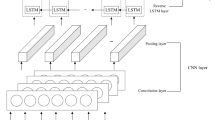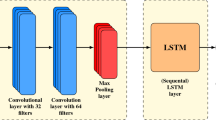Abstract
The multivariate time series often contain complex mixed inputs, with complex correlations between them. Detecting change points in multivariate time series is of great importance, which can find anomalies early and reduce losses, yet very challenging as it is affected by many complex factors, i.e., dynamic correlations and external factors. The performance of traditional methods typically scales poorly. In this paper, we propose Finder, a novel approach of change point detection via multivariate fusion attention networks. Our model consists of two key modules. First, in the time series prediction module, we employ multi-level attention networks based on the Transformer and integrate the external factor fusion component, achieving feature extraction and fusion of multivariate data. Secondly, in the change point detection module, a deep learning classifier is used to detect change points, improving efficiency and accuracy. Extensive experiments prove the superiority and effectiveness of Finder on two real-world datasets. Our approach outperforms the state-of-the-art methods by up to 10.50% on the F1 score.






Similar content being viewed by others
References
Adams RP, MacKay DJ (2007) Bayesian online changepoint detection. Stat 1050:19
Alaa AM, van der Schaar M (2019) Attentive state-space modeling of disease progression. In: Advances in neural information processing systems, pp 11,338–11,348
Aminikhanghahi S, Cook DJ (2017) A survey of methods for time series change point detection. Knowl Inf Syst 51(2):339– 367
Asteriou D, Hall SG (2011) Arima models and the box–jenkins methodology. Appl Econom 2(2):265–286
Ba J, Kiros JR, Hinton GE (2016) Layer normalization. Stat 1050:21
Bahdanau D, Cho K, Bengio Y (2015) Neural machine translation by jointly learning to align and translate. In: 3rd International conference on learning representations, ICLR 2015
Bouktif S, Fiaz A, Ouni A, Serhani MA (2020) Multi-sequence lstm-rnn deep learning and metaheuristics for electric load forecasting. Energies 13(2):391
Canizo M, Triguero I, Conde A, Onieva E (2019) Multi-head cnn–rnn for multi-time series anomaly detection: An industrial case study. Neurocomputing 363:246–260
Chalapathy R, Chawla S (2019) Deep learning for anomaly detection: Asurvey
Chandola V, Vatsavai RR (2011) A gaussian process based online change detection algorithm for monitoring periodic time series. In: Proceedings of the 2011 SIAM international conference on data mining, pp. 95–106. SIAM
Clevert DA, Unterthiner T, Hochreiter S (2015) Fast and accurate deep network learning by exponential linear units (elus). Computer ence
Dadashova B, Li X, Turner S, Koeneman P (2021) Multivariate time series analysis of traffic congestion measures in urban areas as they relate to socioeconomic indicators. Socio-Economic Planning Sciences 75:100877
Dauphin YN, Fan A, Auli M, Grangier D (2017) Language modeling with gated convolutional networks. In: International conference on machine learning, pp 933–941
Fan C, Zhang Y, Pan Y, Li X, Zhang C, Yuan R, Wu D, Wang W, Pei J, Huang H (2019) Multi-horizon time series forecasting with temporal attention learning. In: Proceedings of the 25th ACM SIGKDD International conference on knowledge discovery & data mining, pp 2527–2535
Gal Y, Ghahramani Z (2016) A theoretically grounded application of dropout in recurrent neural networks. In: Advances in neural information processing systems, pp 1019–1027
Guo T, Lin T, Antulov-Fantulin N (2019) Exploring interpretable lstm neural networks over multi-variable data. In: International conference on machine learning, pp 2494–2504
Hayashi T, Fujita H (2021) Cluster-based zero-shot learning for multivariate data. J Ambient Intell Human Comput 12(2):1897–1911
Hernandez-Matamoros A, Fujita H, Hayashi T, Perez-Meana H (2020) Forecasting of covid19 per regions using arima models and polynomial functions. Appl Soft Comput 96(106):610
Hochreiter S, Schmidhuber J (1997) Long short-term memory. Neural Comput 9(8):1735–1780
Hong T, Pinson P, Fan S, Zareipour H, Troccoli A, Hyndman RJ (2016) Probabilistic energy forecasting: Global energy forecasting competition 2014 and beyond
Huang S, Wang D, Wu X, Tang A (2019) Dsanet: Dual self-attention network for multivariate time series forecasting. In: Proceedings of the 28th ACM international conference on information and knowledge management, pp 2129–2132
Hundman K, Constantinou V, Laporte C, Colwell I, Soderstrom T (2018) Detecting spacecraft anomalies using lstms and nonparametric dynamic thresholding. In: Proceedings of the 24th ACM SIGKDD international conference on knowledge discovery & data mining, pp 387–395
Kawahara Y, Sugiyama M (2012) Sequential change-point detection based on direct density-ratio estimation. Stat Anal Data Min 5(2):114–127
Kim TY, Cho SB (2018) Web traffic anomaly detection using c-lstm neural networks. Expert Syst Appl 106:66–76
Kingma D, Ba J (2014) Adam: A method for stochastic optimization. Computer Science
LeCun Y, Bengio Y, et al. (1995) Convolutional networks for images, speech, and time series. Handbook Brain Theory Neural Netw 3361(10):1995
Li S, Jin X, Xuan Y, Zhou X, Chen W, Wang Y, Yan X (2019) Enhancing the locality and breaking the memory bottleneck of transformer on time series forecasting. In: Advances in Neural information processing systems, pp 5243–5253
Liang Y, Ke S, Zhang J, Yi X, Zheng Y (2018) Geoman: Multi-level attention networks for geo-sensory time series prediction. In: IJCAI, pp 3428–3434
Lv Z, Xu J, Zheng K, Yin H, Zhao P, Zhou X (2018) Lc-rnn: a deep learning model for traffic speed prediction. In: Proceedings of the 27th international joint conference on artificial intelligence, pp 3470–3476
Makridakis S, Spiliotis E, Assimakopoulos V (2020) The m4 competition: 100,000 time series and 61 forecasting methods. Int J Forecast 36(1):54–74
Munir M, Siddiqui SA, Dengel A, Ahmed S (2018) Deepant: A deep learning approach for unsupervised anomaly detection in time series. IEEE Access 7:1991–2005
Pan Z, Liang Y, Wang W, Yu Y, Zheng Y, Zhang J (2019) Urban traffic prediction from spatio-temporal data using deep meta learning. In: Proceedings of the 25th ACM SIGKDD international conference on knowledge discovery & data mining, pp 1720–1730
Qin Y, Song D, Cheng H, Cheng W, Jiang G, Cottrell GW (2017) A dual-stage attention-based recurrent neural network for time series prediction. In: Proceedings of the 26th international joint conference on artificial intelligence, pp 2627–2633
Qiu J, Jammalamadaka SR, Ning N (2020) Multivariate time series analysis from a bayesian machine learning perspective. Ann Math Artif Intell 88(10):1061–1082
Rangapuram SS, Seeger MW, Gasthaus J, Stella L, Wang Y, Januschowski T (2018) Deep state space models for time series forecasting. In: Advances in neural information processing systems, pp 7785–7794
Ribeiro GT, Mariani VC, dos Santos Coelho L (2019) Enhanced ensemble structures using wavelet neural networks applied to short-term load forecasting. Eng Appl Artif Intel 82:272–281
Sadouk L (2018) Cnn approaches for time series classification. In: Time series analysis-data, methods, and applications. IntechOpen
Salinas D, Flunkert V, Gasthaus J, Januschowski T (2019) Deepar: Probabilistic forecasting with autoregressive recurrent networks. International Journal of Forecasting
Sezer OB, Gudelek MU, Ozbayoglu AM (2020) Financial time series forecasting with deep learning: A systematic literature review: 2005–2019. Appl Soft Comput 90(106):181
Silva L (2014) A feature engineering approach to wind power forecasting: Gefcom 2012. Int J Forecast 30(2):395–401
Song H, Rajan D, Thiagarajan JJ, Spanias A (2018) Attend and diagnose: Clinical time series analysis using attention models. In: 32nd AAAI Conference on artificial intelligence, AAAI 2018, pp. 4091–4098. AAAI press
Su Y, Zhao Y, Niu C, Liu R, Sun W, Pei D (2019) Robust anomaly detection for multivariate time series through stochastic recurrent neural network. In: Proceedings of the 25th ACM SIGKDD international conference on knowledge discovery & data mining, pp 2828–2837
Sutskever I, Vinyals O, Le QV (2014) Sequence to sequence learning with neural networks. In: Advances in neural information processing systems, pp 3104–3112
Taylor SJ, Letham B (2018) Forecasting at scale. Am Stat 72(1):37–45
Vaswani A, Shazeer N, Parmar N, Uszkoreit J, Jones L, Gomez AN, Kaiser Ł, Polosukhin I (2017) Attention is all you need. In: Advances in neural information processing systems, pp 5998–6008
Wang D, Zhang J, Cao W, Li J, Zheng Y (2018) When will you arrive? estimating travel time based on deep neural networks. In: AAAI, vol 18, pp 1–8
Wang Y, Smola A, Maddix D, Gasthaus J, Foster D, Januschowski T (2019) Deep factors for forecasting. In: International conference on machine learning, pp 6607–6617
Wei WW (2018) Multivariate time series analysis and applications. John Wiley Sons, New York
Wen R, Torkkola K, Narayanaswamy BM (2017) A multi-horizon quantile recurrent forecaster. Stat 1050:29
Xu H, Chen W, Zhao N, Li Z, Bu J, Li Z, Liu Y, Zhao Y, Pei D, Feng Y et al (2018) Unsupervised anomaly detection via variational auto-encoder for seasonal kpis in web applications. In: Proceedings of the 2018 world wide web conference, pp 187–196
Zhang A, Paisley J (2018) Deep bayesian nonparametric tracking. In: International conference on machine learning, pp 5833–5841
Zhang J, Zheng Y, Qi D (2017) Deep spatio-temporal residual networks for citywide crowd flows prediction. In: Proceedings of the AAAI conference on artificial intelligence, vol 31
Zheng J, Xu C, Zhang Z, Li X (2017) Electric load forecasting in smart grids using long-short-term-memory based recurrent neural network. In: 2017 51st Annual conference on information sciences and systems (CISS), pp 1–6. IEEE
Zheng Y, Liu Q, Chen E, Ge Y, Zhao JL (2014) Time series classification using multi-channels deep convolutional neural networks. In: International conference on web-age information management, pp 298–310. Springer
Author information
Authors and Affiliations
Corresponding author
Additional information
Publisher’s note
Springer Nature remains neutral with regard to jurisdictional claims in published maps and institutional affiliations.
Rights and permissions
About this article
Cite this article
Du, H., Duan, Z. Finder: A novel approach of change point detection for multivariate time series. Appl Intell 52, 2496–2509 (2022). https://doi.org/10.1007/s10489-021-02532-x
Accepted:
Published:
Issue Date:
DOI: https://doi.org/10.1007/s10489-021-02532-x




